Scion targeted the youth market…but it missed by a mile. We consider its history, and the benefits of its pre-owned options.
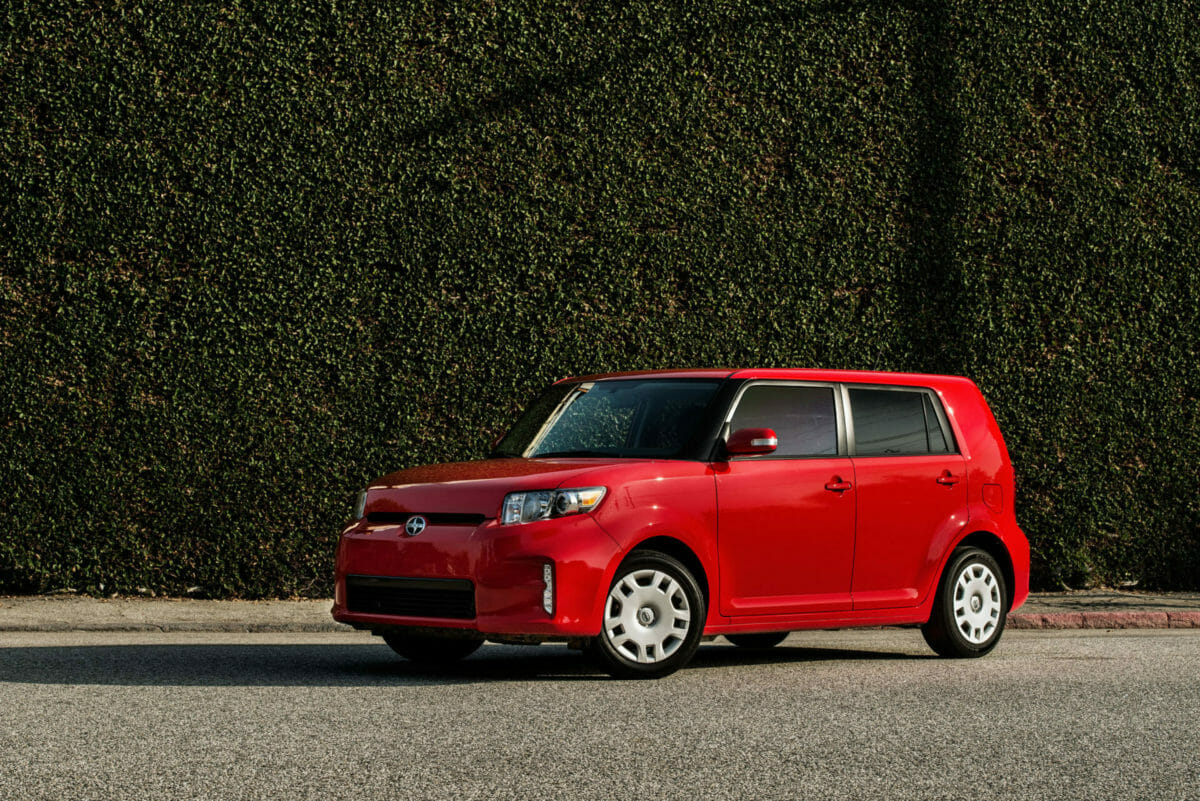
It’s hard to believe, but Toyota‘s youth-focused Scion brand was discontinued over five years ago. Back in February 2016, Jim Lentz, Toyota’s CEO for North America, announced that the 2016 model year would be Scion’s last. It was a shock to a lot of the automotive community, but it probably should not have been. Let’s take a quick look at the Scion brand and why it met its fate at the hands of Toyota executives.
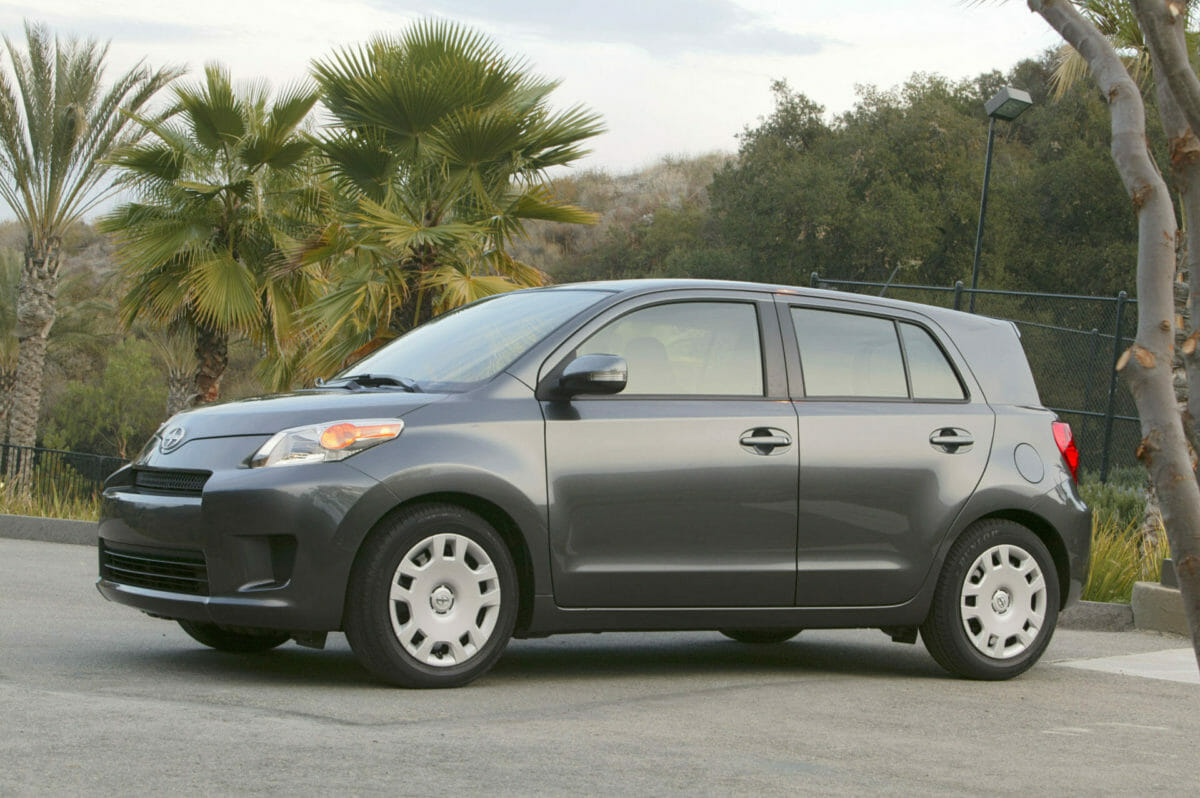
A Scion is Born
Scion was intended to have been about image and style, the kind of stuff that people in boardrooms think that young people care about. It was part of “Project Genesis,” which was an ominously named attempt to bring younger buyers to Toyota showrooms just before Y2K (that’s the year “2000” for those readers who are too young to remember).
Sadly, this initiative resulted in the Toyota Echo, a rather bland economy car. It also brought us the third-generation Toyota MR-2 and seventh-generation Toyota Celica model. Both of which were discontinued shortly after, and neither of which will go down in automotive history as amazing performance vehicles.
So, Project Genesis was done around 2001, which coincidentally is probably around the time the band Genesis broke up (again). Again, for the younger readers, that’s a musical act. Toyota wasn’t done trying to encourage “the youths” to visit their dealerships. The equally ominous-sounding “Project Exodus” came next, and Toyota brought in a hip Los Angeles-based digital design company called Fresh Machine to develop a youth-focused brand, logo, and website known as “Scion.”
The new sub-brand launched with two concept vehicles: the bbX and the ccX. Those became the xB and tC, and Toyota added the xA to the roster as the first three models sold under the new Scion brand. Banking on the youth-focused marketing, funky naming conventions, and sort-of-funky design language, things looked promising early on.
By February of 2004, the rollout to dealerships nationwide was complete, and Scion was standing on its own. Well, actually with a few exceptions, it was standing in the corner of Toyota dealerships. Anyone who recalls visiting a dealership during the Scion era will remember that they slightly resembled a discotheque oddly placed in a Toyota dealership. With “cool” signage and lights, Toyota dealers attempted to make the most of their new youth brand. Let’s see what they offered over the years that Scion existed.
Scion Models
The initial rollout of Scion models, like the xA, xB, and tC offered Toyota reliability with new packaging. It wasn’t a bad concept and they were joined, or replaced, by new offerings like the iA, iQ, iM, and the FR-S. Before we get into what went wrong, let’s see what was actually being sold in Scion dealers.
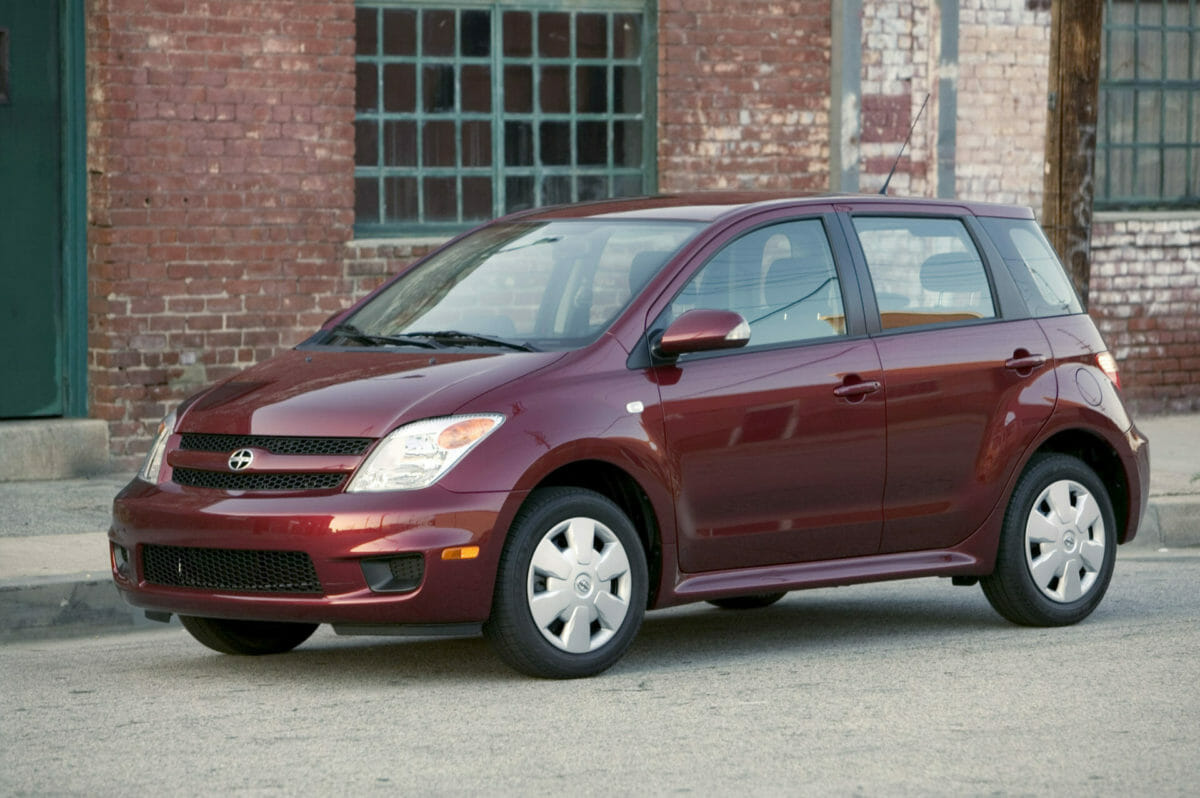
Scion xA
The xA was a five-door subcompact hatchback that was produced for the U.S. market between 2004 and 2006. It came in two trim levels, manual and automatic. It was launched with a small 108 horsepower engine, that had actually dropped to 103 horsepower by 2006. It was discontinued and eventually replaced by the Scion xD for for 2008 model year.
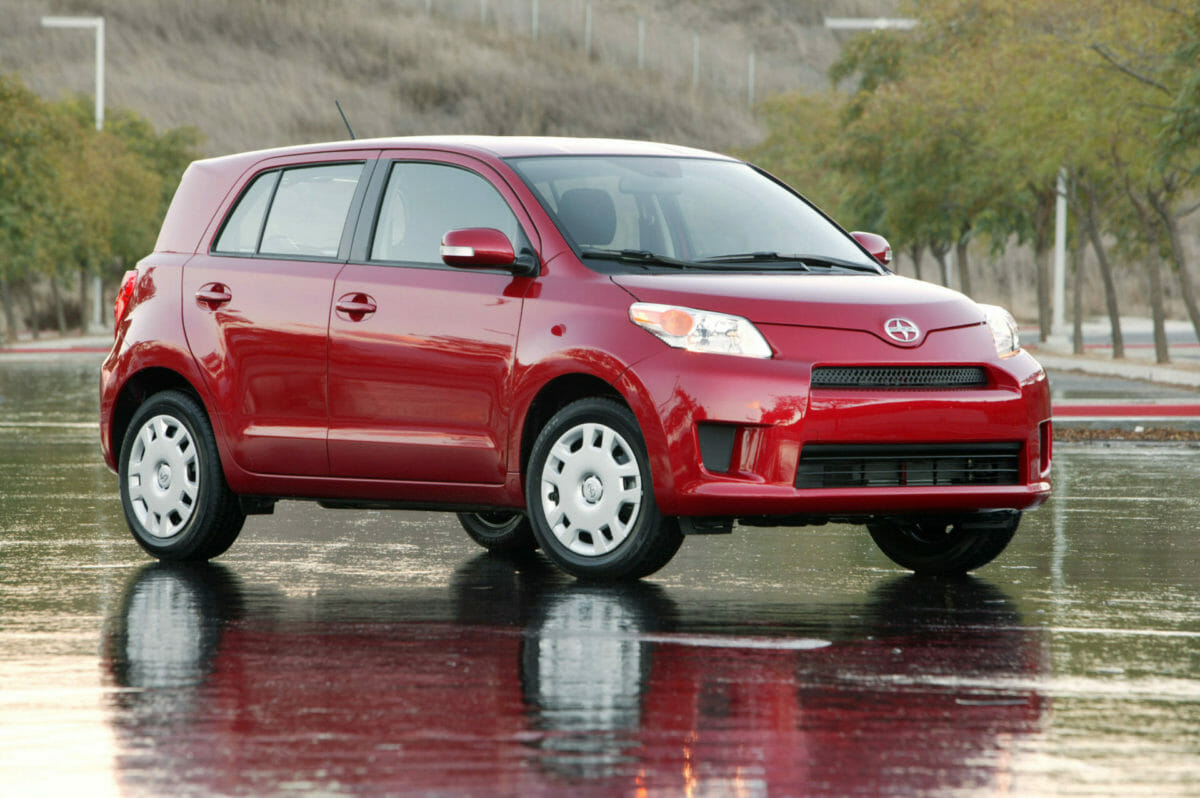
Scion xD
The new xD was also a five-door subcompact hatchback loosely based on the Toyota Yaris. It arrived in Scion dealership corners for 2008 and soldiered on without a new version until the 2014 model year. It featured a slightly more powerful 128 engine and came in manual and automatic trim levels.
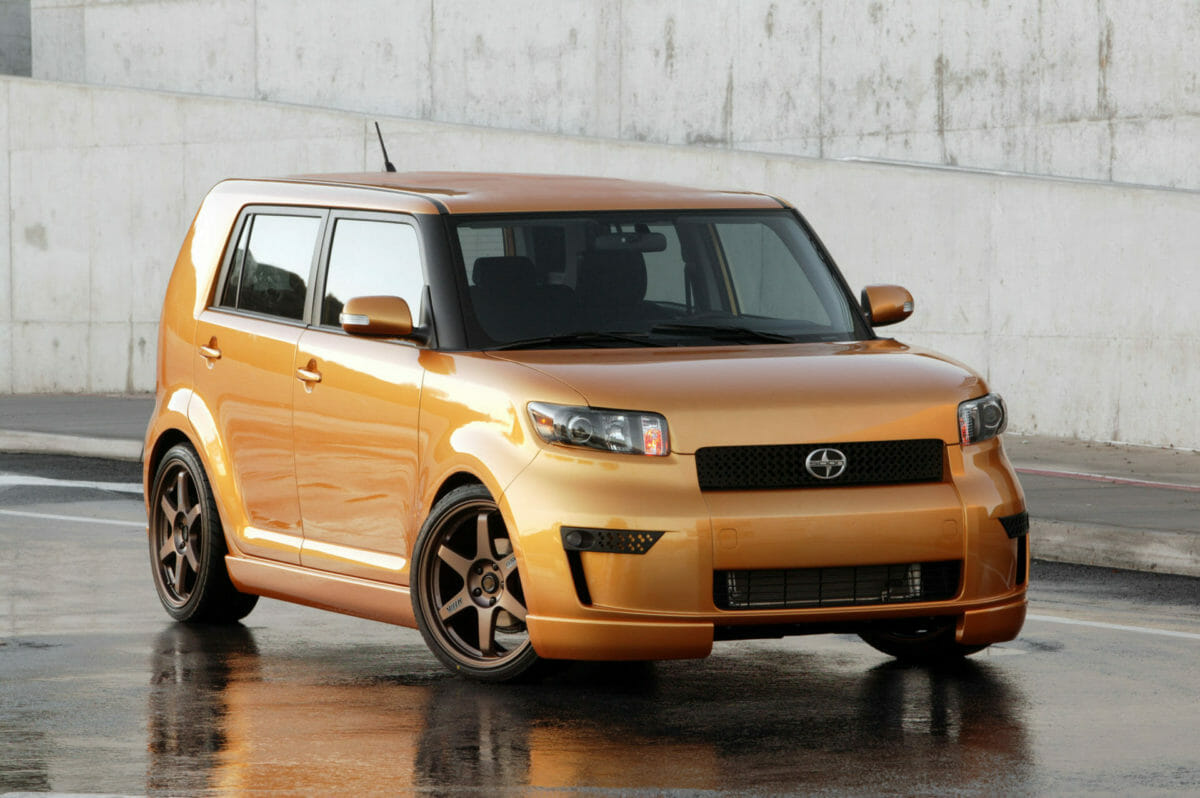
Scion xB
The funky box-on-wheels xB was initially sold as a subcompact for its first-generation (2004–2006). A bright spot in the lineup, the xB also came in two trim levels, manual and automatic. It had 21.2 cu. ft. of space behind the rear seats, and 43.4 cu. ft. with the seats folded.
Even though it had the same small 108 horsepower engine (103 horsepower for 2006) that was found in the xA, it was a favorite among those who needed to haul around equipment but wanted a quirky, fun-looking vehicle.
After a year off, the second generation (2008–2015) launched in a larger compact format. It also came in manual and automatic trim levels up until 2010, when Scion finally started to play up the naming conventions. You could get it in Base and Release Series 7.0, which finally sounds like something a legitimately cool tech-focused car company would sell. That naming convention continued up until 2013 when Scion shorted it to “10 Series“. The last model year, 2015 saw the Base trim joined by the “686 Parklan Edition.”
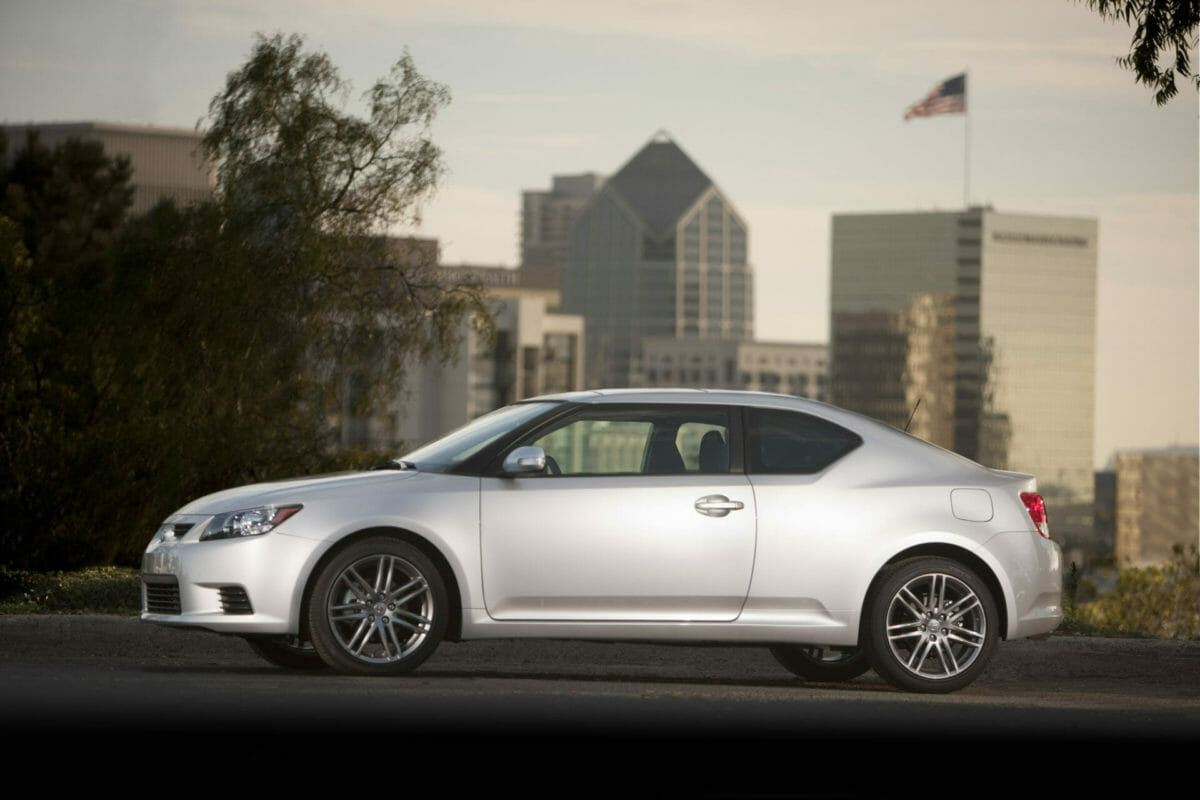
Scion tC
The two-door tC was Scion’s first attempt at a compact performance car. It joined the lineup in 2005 and its first generation was around until 2010. It came in base and manual trim levels and had a much peppier engine, an 160-horsepower 2.4L four-cylinder.
Starting in 2010, Scion also started using the “Release series” terminology as a trim name. The redesigned tC arrived for its second generation (2011–2016) with more horsepower (180) and temporarily returning to the normal “manual” and “automatic” trim levels. The next year, the “Release series” returned, and by 2014 Scion added the Monogram trim.
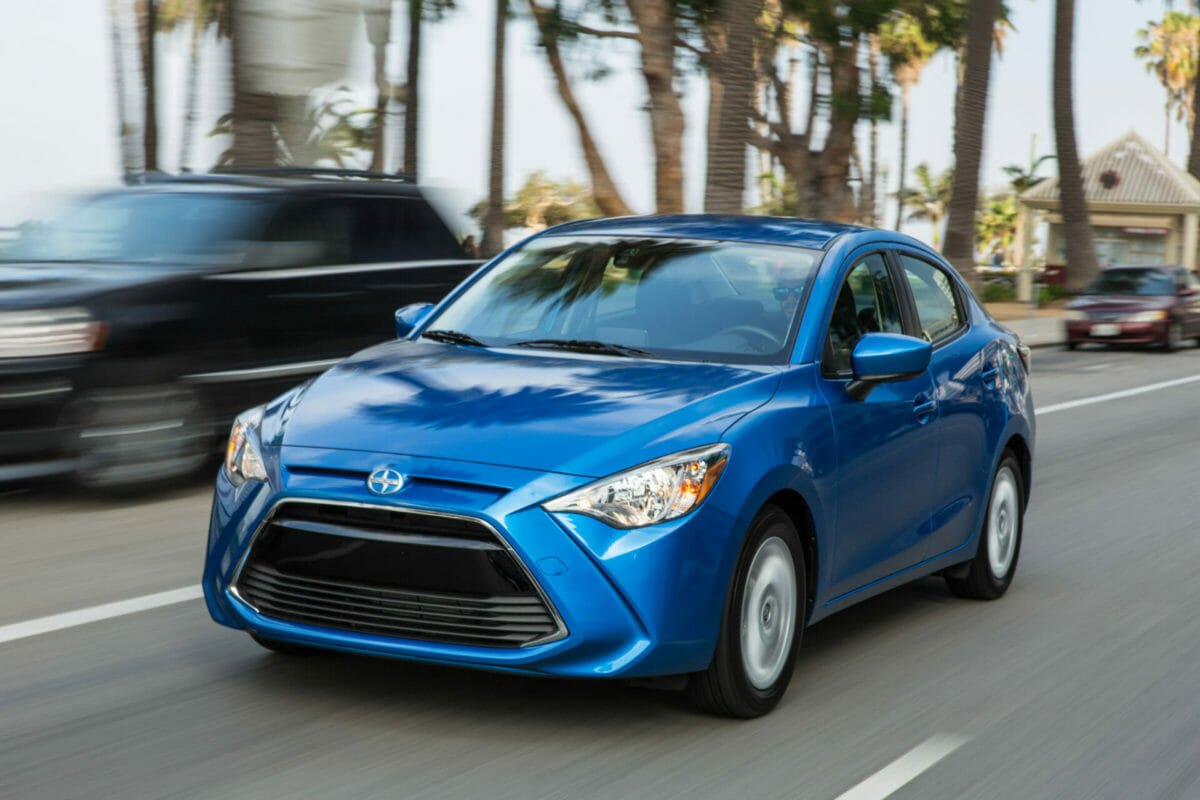
Scion iA
The Scion iA has the distinction of having being tied with the Scion iM for the shortest tenure in the Scion lineup, sold for just one year (2016). Built on Mazda’s DJ platform (Scion always did love to party) the iA is very similar to the Mazda2 and Toyota Yaris. It was sold in manual and automatic trim and was powered by a 106-horsepower engine.
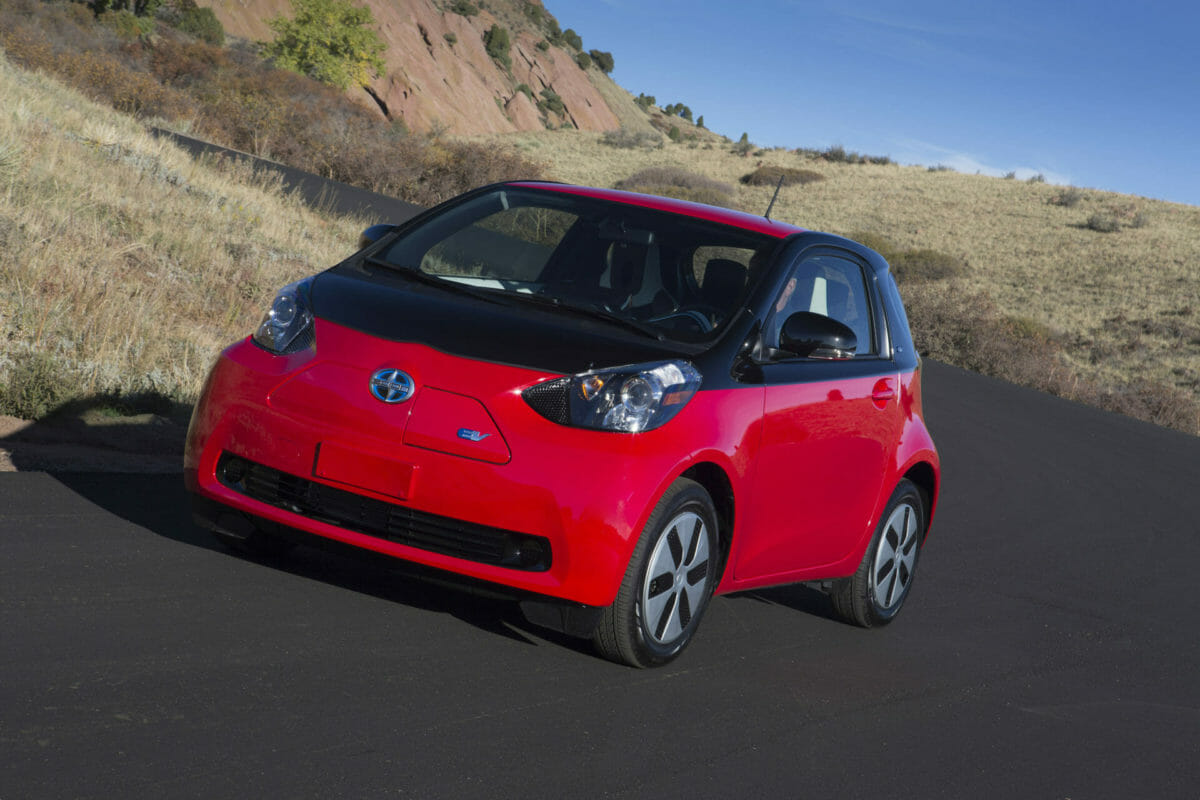
Scion iQ
Scion built its brand on small and funky, and it doesn’t get much smaller than the iQ. Sold in the U.S. from 2012–2015 the iQ was a neat little car based on an overseas Toyota of the same name. It had a 94-horsepower engine and was sold as a three-door hatchback only.
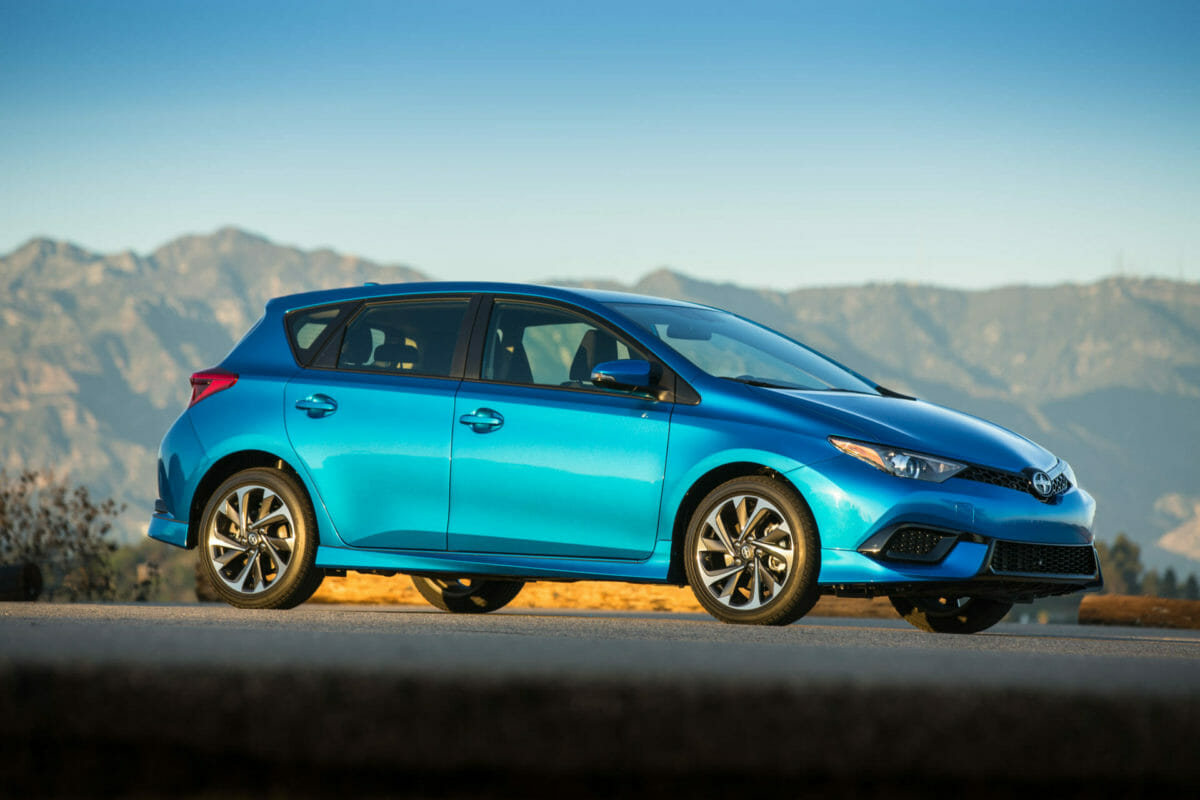
Scion iM
Also only sold for the 2016 model year, the Scion iM is a compact five-door hatchback based on the Toyota Auris, which is itself derived from the Corolla. It came in manual, and you guessed it, automatic (actually “CVT”) trim levels and sported an aggressive body kit and 137 horsepower engine.
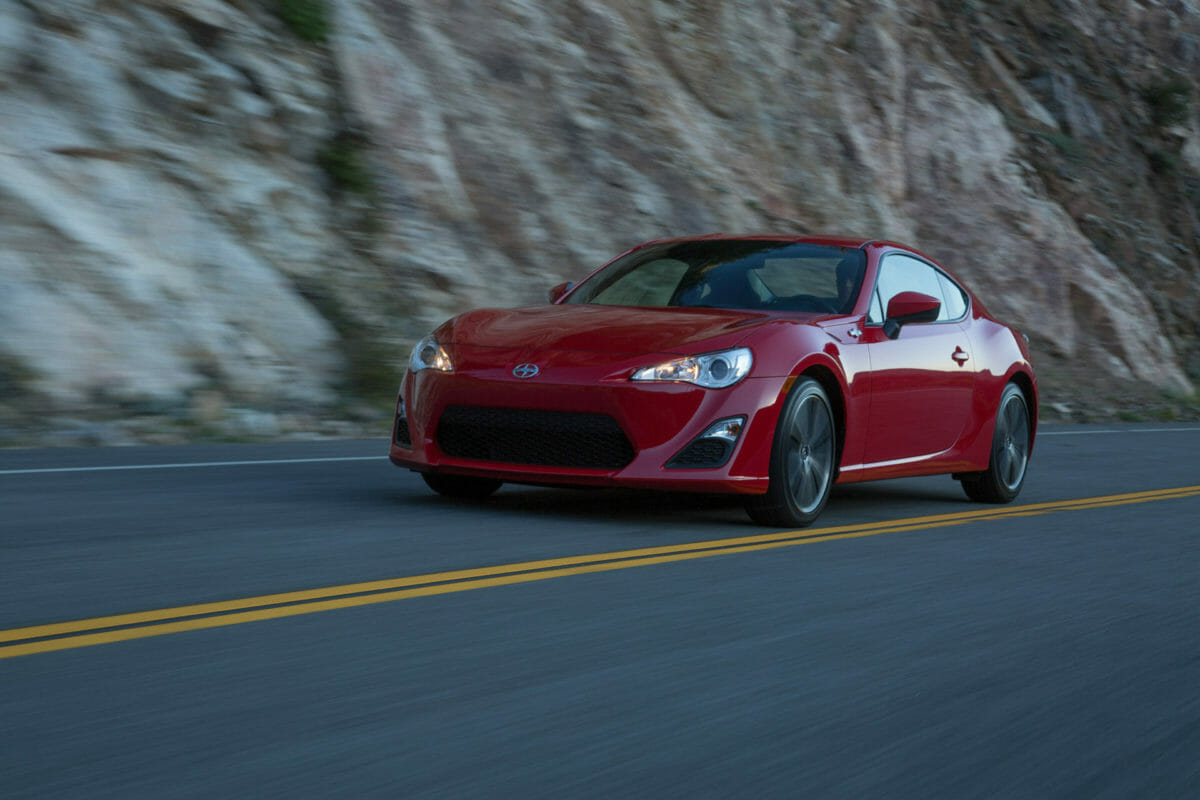
Scion FR-S
The Subaru-built FR-S is a sporty rear-wheel-drive, two-door, performance car sold from 2013 to 2016. The name is literally an acronym for Front-engine, Rear-wheel drive, Sport. Power comes from a 200-horsepower boxer engine.
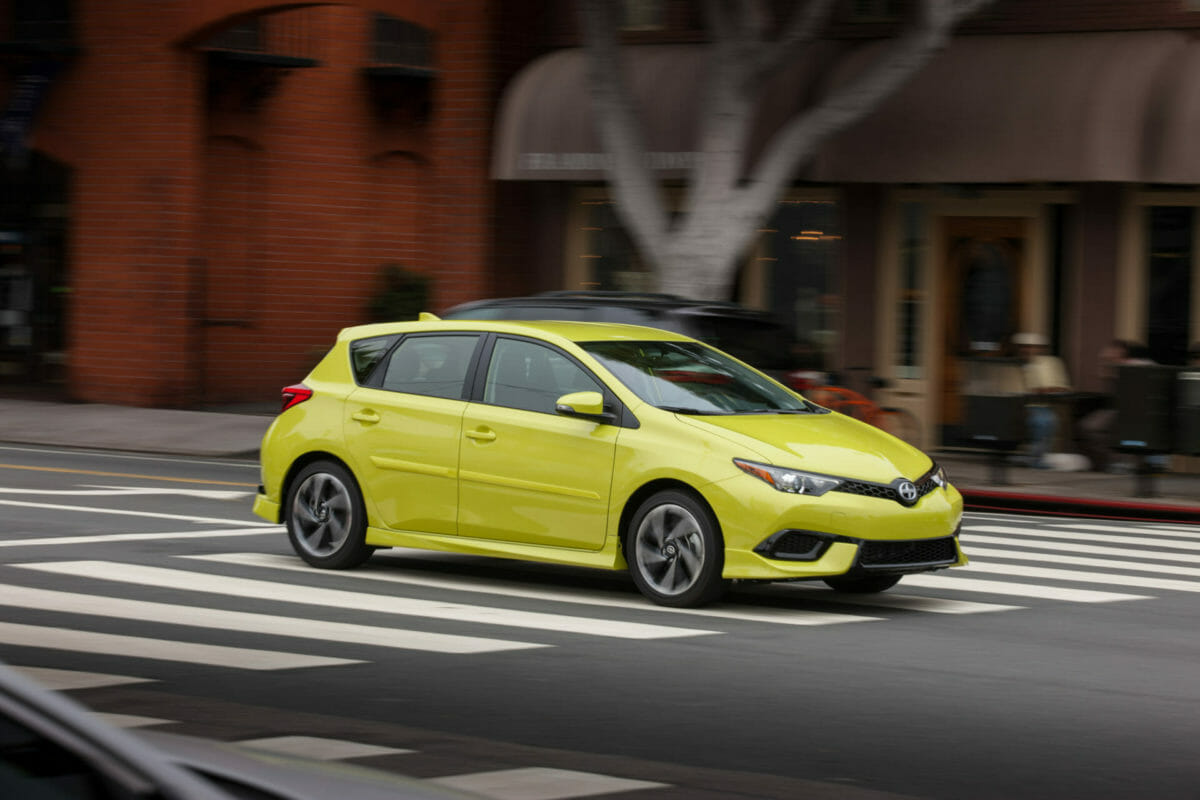
What Went Wrong?
2016 Scion iM
Scion was built as a brand focused on individualism. When it was launched in the early 2000s, there was still a massive market surrounding import tuner culture, and Toyota banked on the notion that the millennial generation would obviously want to customize their new Scion to stand out.
What was actually happening at that time was the Apple phenomenon, where minimalist designs in the tech world gave way to real substance underneath. Toyota overestimated how many buyers would come into a Toyota and Scion dealership looking for ostentatious stand-out designs for their next car.
Arguably you could say that Scion wasn’t delivering that anyway, aside from perhaps the xB most of their designs were rather mundane. It’s not unlike the way the thousands of customers who buy a beige Toyota Corolla because they simply see their car as an appliance. Merely a tool to get from point A to point B. They don’t necessarily care about performance or design, it’s a means to an end, not a statement.
The target market for Scion ended up being similar, they just wanted actual content inside the car; it needed to have the latest technology in a comfortable and reliable package. There were bright spots across the Scion lineup, but Toyota never really invested in the brand to make it stand out. Instead of hosting Scion-themed parties with oontz-oontz music spinning via a recognizable DJ, they should have been investing in the actual vehicles.
What ended up happening was a hodgepodge of rebranded Toyota (and Mazdas, and Subarus) vehicles launched with slightly different exterior and interior designs. A cool black wheel here, a pop of bright color there, it never felt integrated. It was like when your dad wore his hat backwards and said things like “yo dudes” around your friends. Eyerolls followed.
And unfortunately, that is what happened here. Toyota attempted to harness a cultural phenomenon through marketing, and not content. Plus, the “sell low, then customize” concept never quite caught on. Toyota expected buyers to get sucked into low prices on the window sticker, but walk out after adding a four-digit number in accessories, and that just didn’t happen often.
Ironically, you’ll notice that the average Scion driver today–as was the case all along–is older than expected. Toyota claimed the buyer demographic was around age 30, but data shows it was much higher, creeping into the mid-40s at one point. We imagine those buyers gave the free flat-brimmed Scion hat–provided with every Scion purchase–to their nephew.
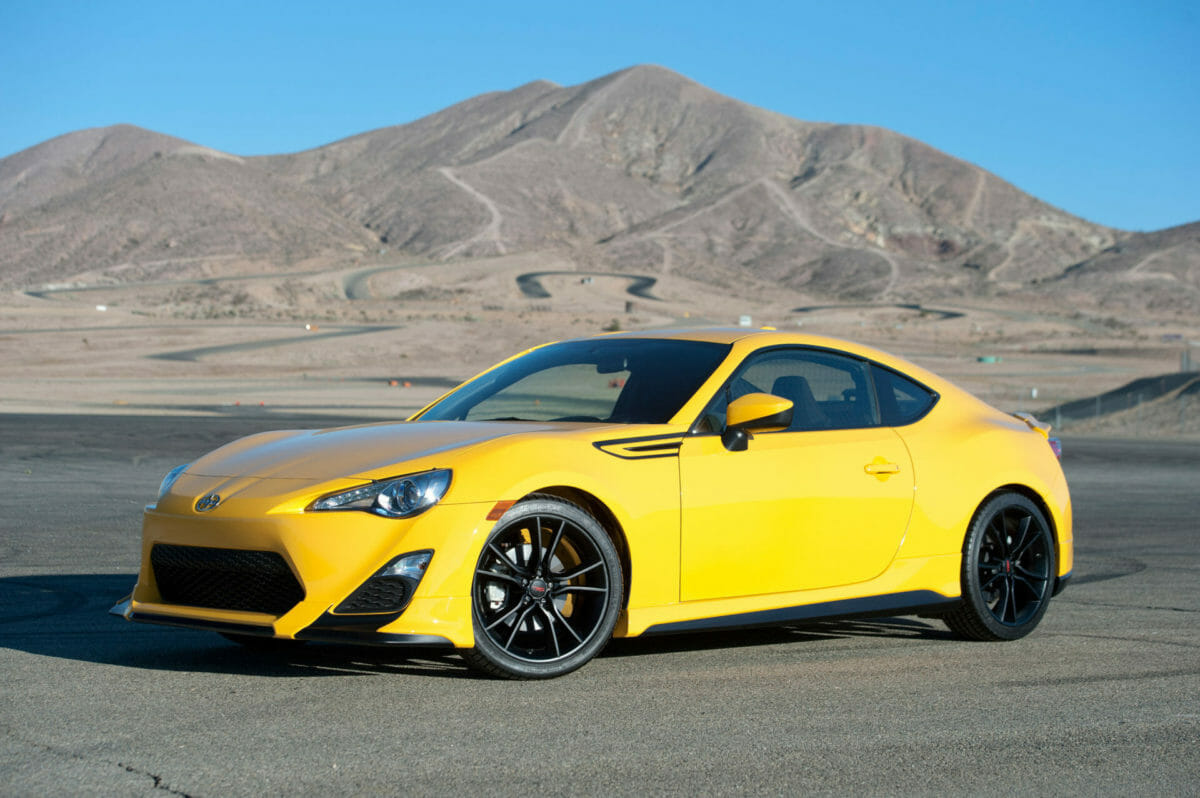
Lack of Consistent Content
Looking across the lineup, the first xB was legitimately cool. It didn’t look like anything else on American roads and was a nice nod to Japanese car culture. It was small, but spacious inside.
It looked different, in a good way, but had a reliable Toyota powertrain underneath. It actually ended up getting customized extensively, but likely more via the aftermarket than in Scion’s corner of the Toyota dealership. The second-generation xB was larger and subjectively less attractive. The xB did not make the transition to Toyota, with 2015 being its last year.
The xA and its replacement xD were small, practical, hatchbacks, but were never particularly attractive or interesting. However, if Toyota had focused on the inside, integrating new connectivity that was emerging at the time, they may have been more successful with the five-door Scions. The xD was also discontinued for the 2015 model year.
The tC was a sporty option that had some early success, being the top seller early on for the brand. Plus, it benefited from some actual performance engineering and tuning and was pretty fun to drive.
However, like the xA, it never really changed that much. Even its second generation was a bit evolutionary.
Thus, it was another of the models that did not carry over to Toyota, and 2016 was its final model year.
The newer, faster, more attractive FR-S (also a Subaru BRZ) was likely part of that reason, and it rather easily took its new Toyota 86 badge and is still for sale today. Even while a Scion, the FR-S sold in fewer numbers than its Subaru cousin, a sign of things to come.
The Scion iA was a Mazda2, and looked like it, and the Scion iM was Toyota Corolla and looked like it. It must have been confusing for buyers to see similar models at the Toyota dealer. This wasn’t the new, fresh content that buyers wanted. It was rebranded and rehashed, and in the end, not enough to keep the lights on. The iA lived on as the Toyota Yaris iA sedan for 2017.
The other “i” models were also rebadged Toyotas, however, the little iQ temporarily captured some of that quirky Scion magic, but was likely too small for most American buyers and did not live in after 2016. The attractive iM was pretty fun to drive, but with its launch in 2016, it was too little, too late, and was rebadged as the Corolla iM for 2017.
If you parked all of these models across in a lineup, you’ll notice something else, none of them really have much resemblance. Head over to Mazda, or most of the luxury brands, and you’ll see a clear brand identity across all vehicles.
A similar front end, a similar back end, consistent interior layouts, it’s recognizable. For a company so intent on branding, they failed miserably at creating an identifiable look for their vehicles. Add in confusing trim names, or a general lack of trim name (looking at you “manual” and “automatic”), and you start to see why Scion was no more.
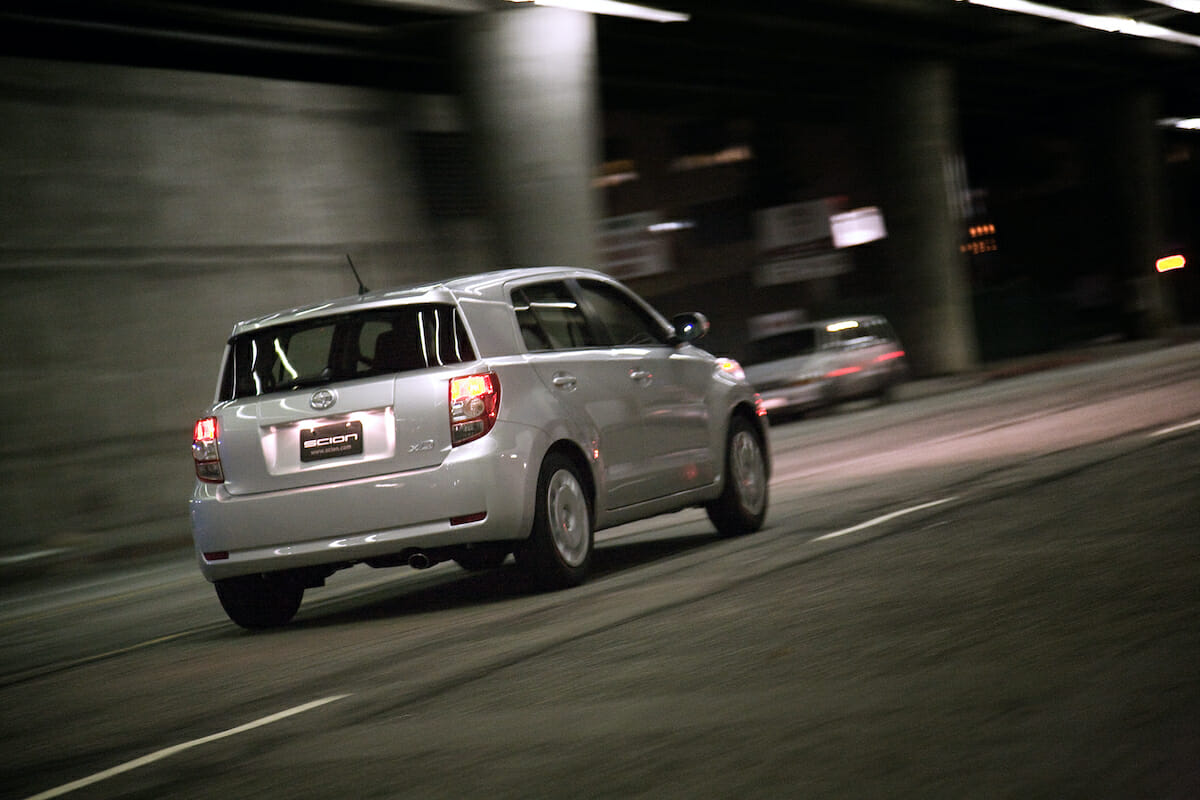
Death of Scion
In the end, Toyota claimed that Scion was an experiment, an incubator for new ideas, which in itself meant it was a success. However, it was the lack of innovation that eventually helped drive a nail in Scion’s coffin. Toyota promoted Scion as having a bit more style, a bit more substance, than their more pedestrian models.
Instead, they removed content to sell them at low prices and banked on selling accessories and add-ons that just never materialized. This left buyers who bought the vehicles as-is feeling like they were missing something.
Toyota even produced a video ensuring buyers that Scion will live on.
However, Scion is dead. But the brand will live on in people’s memory for a certain amount of time. The current Scion vehicles on the road have legendary Toyota reliability after all, which should count for something.
After that, Scion will sadly go the way of the Pontiac, Saturn, and a host of other major manufacturer sub-brands that died off. The youth experiment ended around five years ago, and ideally, folks in the Toyota boardroom learned a thing or two along the way.
Photos: Toyota
